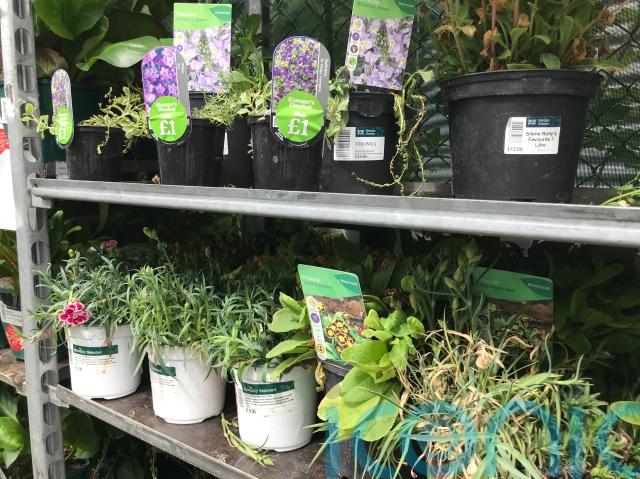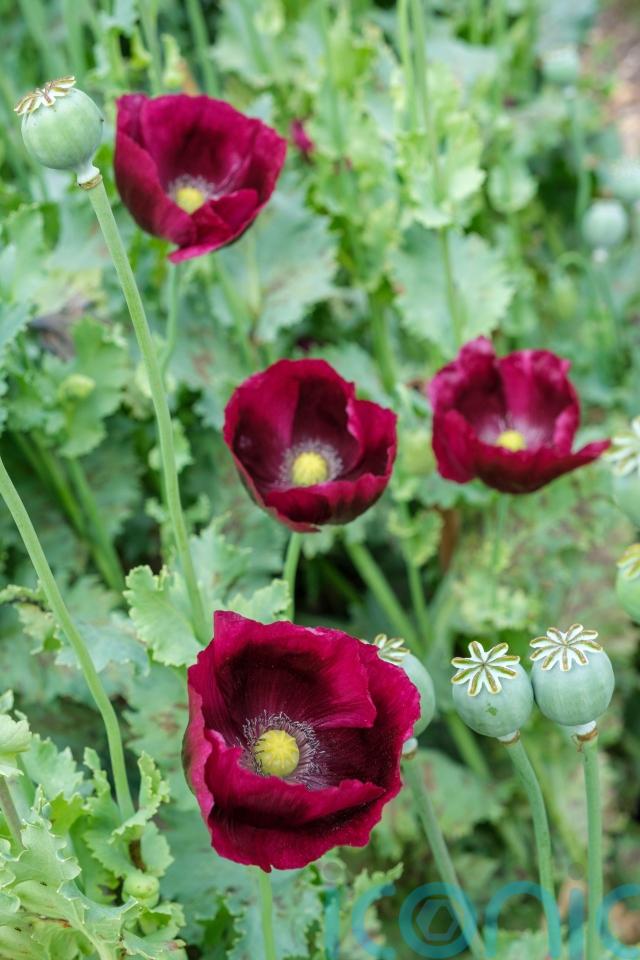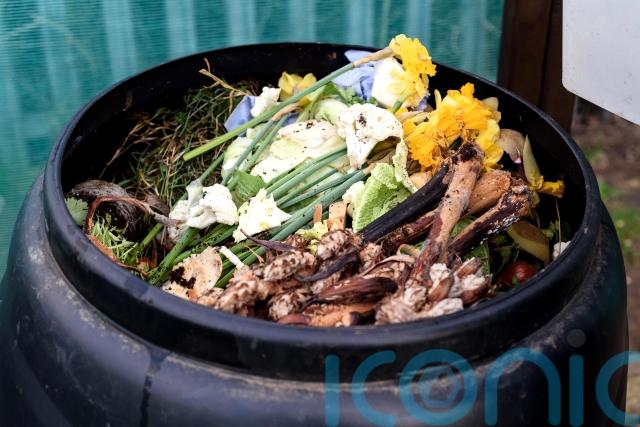
You may have noticed gaps in your borders but can’t afford new plants or bags of compost, while your pots are empty and waiting to be refilled for a new season.
So, how can you go about making borders beautiful without spending a fortune?
Look at the sale racks

Most garden centres have sale racks, full of plants which have already flowered and look a bit forlorn, going for huge knockdown prices. Look for the perennials among them because they will come back year after year and autumn is a good time to plant them.
Make sure you check the labels for preferred situation and ultimate height of the plant, so you know where to position it in the border.
Buy bare root
Plants including roses and some hedging plants are much cheaper if you buy the bare root versions during their dormant period, which will arrive without leaves or flowers, just as bare roots. Plant them from November to spring and they should give you plenty of blooms next summer.
Take cuttings
If you’re worried your tender perennials such as some salvias aren’t going to survive the winter, take cuttings now, to overwinter in a sheltered, frost-free place such as a greenhouse or conservatory, suggests Jonathan Webster, curator of RHS Rosemoor in Devon.
“Taking cuttings is a good thing to do. If you leave the plant out and it’s got a 50:50 chance of survival, if you have cuttings then you’re hedging your bets,” he says.
Some plants will root easily in water, says gardening influencer Anya Lautenbach, author of The Money-Saving Gardener and The Money-Saving Garden Year. These include herbs such as rosemary, and flowering plants including nepeta, phlox and cosmos.
Hardwood cuttings of plants including abelia, deutzia, buddleia, cornus (dogwood), forsythia and philadelphus can be taken during the dormant season, from mid-autumn after leaf fall, through winter, avoiding periods of severe frost, the RHS advises.
Boost flower power with self-seeders
If a plant has self-seeded, take advantage of that new plant, says Lautenbach.
Plants which commonly self seed include opium poppies, perennial lady’s mantle (Alchemilla mollis), foxgloves, forget-me-nots, honesty and Aquilegia vulgaris (known as granny’s bonnet).

“I actually didn’t know that hellebores, which are hellishly expensive, actually self-seed,” Lautenbach says. “Initially they don’t look like the proper hellebores, but that’s how I found them. So by observing nature, I found some free hellebores.”
Self-sown seedlings of many plants often emerge in light, open spaces. They need to grow a little if you’re going to identify them successfully, but if you want to transplant them, dig them up in clumps and move them to where you want them.
More tender plants can be potted up and nurtured indoors to build their strength before moving outside in spring.
Sow seeds rather than buying mature plants
Buying a packet of seeds is so much cheaper than investing in a mature plant and will give you far more for your money.
Hardy annuals such as pot marigolds and poached-egg plants can be sown outside as they are tough enough to overwinter outdoors, and should provide you with plenty of blooms in late spring or early summer, says Lautenbach.
If you have room indoors on a windowsill or in a cool, light room, have a go at growing sea holly (eryngium), lupins and red hot pokers from seed. Even if only a few of them germinate, you’ll still get more for your money.
Make your own compost
Some local authorities will provide plastic compost bins free of charge, but you could also make your own from old wooden pallets secured with stakes and some sort of makeshift lid like a piece of old carpet to keep the contents warm. A successful bin should exclude rain, retain some warmth, allow drainage and let in air, the RHS suggests.

The ingredients you put in are basically free – a mixture of grass clippings, kitchen scraps (avoiding cooked food and meat), old plant materials and trimmings which are prolific at this time of year as you do your autumn tidy-up, removing spent summer plants and vegetable debris.
You need to layer the leafy green matter – grass clippings, annual weeds, old fruit and veg and kitchen peelings – which is rich in nitrogen (between 25-50% of the mix) between the brown material – dry, woody waste such as shredded or chopped up prunings, hedge trimmings and dead stems – which is carbon-rich.
Don’t let grass clippings dominate. Mix them with brown materials when you add them to the bin, the RHS advises. If you’ve too many, add shredded cardboard which will stop the compost mixture becoming wet and soggy.
Turn the compost every couple of months and, depending on the mix, the location and the type of bin, your compost should be ready some time between six months and two years.
In the long run, this will save a lot of money on bags of compost from the garden centre.
Subscribe or register today to discover more from DonegalLive.ie
Buy the e-paper of the Donegal Democrat, Donegal People's Press, Donegal Post and Inish Times here for instant access to Donegal's premier news titles.
Keep up with the latest news from Donegal with our daily newsletter featuring the most important stories of the day delivered to your inbox every evening at 5pm.